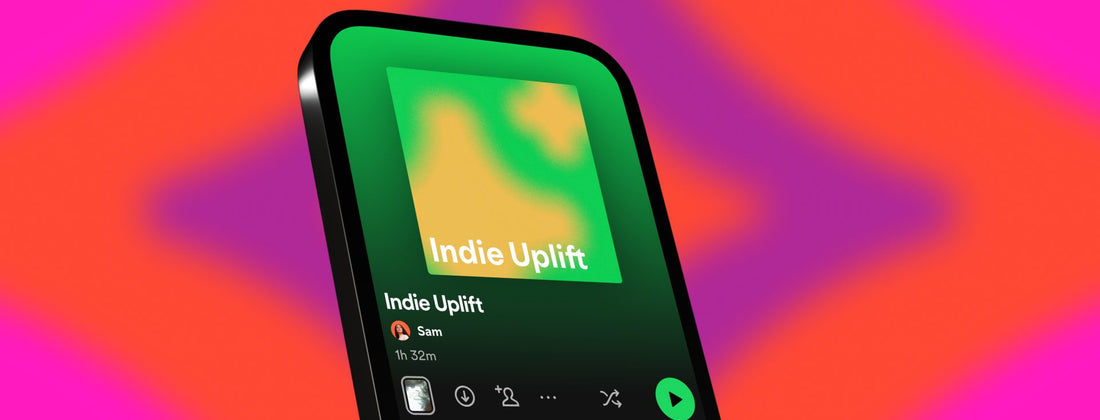
How to Pitch Your Music on Spotify Playlists (2025 Guide)
Share
How to Pitch Your Music on Spotify Playlists (2025 Guide)

Spotify playlist placement is still the holy grail of exposure. With over 4 billion+ playlists on the platform and 22% of all listening coming from algorithmic playlists like Discover Weekly or Radio, artists can’t afford to skip proper playlist pitching. Whether you're targeting editorial placements or just trying to get your song into algorithmic loops, the pitch you write matters.
Spotify’s own data shows that over 70,000 songs are pitched via Spotify for Artists every week – and only a small fraction make it into official playlists. But with the right strategy, timing, and profile setup, your odds increase dramatically. In this guide, we’ll break down the 2025 best practices for pitching your tracks.
Step 1: Release Strategy (Before You Pitch)
Before pitching, make sure your release plan is optimized. Spotify prefers:
-
Exclusive releases (not already uploaded elsewhere)
-
Original tracks (not remixes/covers unless officially cleared)
-
Songs delivered at least 7 days before release
Your song must be unreleased. Pitches are only accepted for future-dated tracks, so you can’t submit songs already live. The sweet spot is 7–14 days before the release date.
💡 Tip: Use a pre-save campaign during this period to build algorithmic momentum while pitching.
Step 2: Metadata Matters
Spotify editors use metadata and genre tagging to filter relevant tracks. In your distributor dashboard, be sure to:
-
Enter accurate primary and secondary genres
-
Add mood, language, and instrumentation details
-
Avoid "Other" or vague genre tags unless truly necessary
🚫 Mismatched metadata hurts your chances. For example, if you tag a house track as indie folk, it won’t reach the correct editor or algorithm pool. Be honest and consistent.
Step 3: Craft a Smart Pitch (Inside Spotify for Artists)
Once your song is submitted through your distributor, head to Spotify for Artists > Music > Upcoming > Click "Pitch" next to the track. You’ll now fill out the submission form.
Spotify gives you 500 characters for the written pitch. Here’s how to stand out:
-
Highlight your unique sound or concept
-
Mention notable collaborators or past success
-
Share context (e.g. part of an album, inspired by real events, seasonal)
-
Point out marketing plans (e.g. TikTok promo, presaves, live shows)
Avoid generic claims like “this is a hit” or “everyone loves it.” Focus on facts, story, and value for listeners.
📝 Example:
“This track blends dark pop and Middle Eastern instrumentation, with production from [Producer Name] (credits: Artist A, Artist B). It’s the lead single from my concept EP about diaspora identity, launching alongside a short film. We’ve lined up TikTok campaigns and press in [Country].”
🔥 Pro Tip: Local context helps. Mention if the track targets a specific region, language group, or subculture.
Step 4: Target the Right Playlists
Spotify has 3 types of playlists:
-
Editorial (curated by Spotify editors – e.g. Fresh Finds, RapCaviar)
-
Algorithmic (auto-curated – Discover Weekly, Release Radar, Radio)
-
Listener-made (user and influencer playlists)
Your pitch is only for editorial, but it also influences algorithmic.
To increase algorithmic traction:
-
Get saves and shares early (presaves help)
-
Drive external traffic (IG, TikTok, email list)
-
Encourage fans to follow and playlist your track
For listener playlists:
-
Submit to playlist curators via platforms like SubmitHub
-
Research local influencers or TikTok accounts making themed playlists
-
Reach out directly and offer value (e.g. reposts, interviews)
Step 5: Maximize After Submission
Once you’ve submitted:
-
Update your Artist Pick with the track and a message
-
Create Spotify Promo Cards and share them on socials
-
Use Spotify Canvas to create a visual loop
-
Add Spotify Codes to flyers, posts, or videos
🎯 Use the release week to boost engagement:
-
Post short clips on IG Reels, TikTok, Shorts
-
Share behind-the-scenes, lyrics, or live snippets
-
Ask fans to share the track in their playlists or stories
Bonus: Editorial Doesn’t Happen Overnight
Most editorial adds come after the song’s release – not always on Day 1. Editors monitor performance: saves, skip rate, replay rate, listener location. If the track performs well, it may be added 1–3 weeks later.
🚀 So don’t panic if you’re not playlisted right away. Focus on steady growth.
Want expert help pitching your next release?
Chartlex Spotify Growth Plans combine algorithmic triggers + geo-targeting + profile optimization to increase your editorial odds.
Or get a custom campaign quote based on your goals and market.
